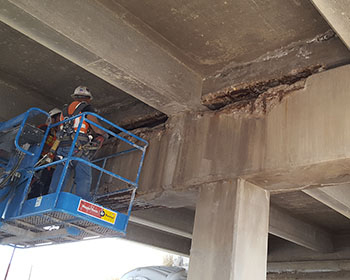New Bridge Inspection Framework is More Effective and Reduces Costs
Posted: May 9, 2024
 Routine bridge inspections in the United States are primarily conducted via visual inspection on a fixed two-year cycle. Although this strategy has generally produced a safe bridge network, bridge inspections are expensive and there is a need for an enhanced inspection planning process that could more efficiently use inspection resources, consider the importance and risk associated with structures, and incorporate nondestructive evaluations. Researchers at Colorado State University have developed an uncertainty-based bridge inspection planning framework that offers a multitude of advantages. It provides flexibility to adapt inspection schedules, optimizes resource allocation, mitigates risks, and leads to cost savings. Furthermore, it encourages long-term planning, data-driven decision-making, and adaptive management, ultimately improving safety and environmental considerations. This approach enhances public confidence in bridge infrastructure by demonstrating a commitment to proactive maintenance and resilience. This inspection planning framework helps to conduct bridge inspections only when needed, which will save resources and, with specialized inspection tools, provide the most useful information.
Routine bridge inspections in the United States are primarily conducted via visual inspection on a fixed two-year cycle. Although this strategy has generally produced a safe bridge network, bridge inspections are expensive and there is a need for an enhanced inspection planning process that could more efficiently use inspection resources, consider the importance and risk associated with structures, and incorporate nondestructive evaluations. Researchers at Colorado State University have developed an uncertainty-based bridge inspection planning framework that offers a multitude of advantages. It provides flexibility to adapt inspection schedules, optimizes resource allocation, mitigates risks, and leads to cost savings. Furthermore, it encourages long-term planning, data-driven decision-making, and adaptive management, ultimately improving safety and environmental considerations. This approach enhances public confidence in bridge infrastructure by demonstrating a commitment to proactive maintenance and resilience. This inspection planning framework helps to conduct bridge inspections only when needed, which will save resources and, with specialized inspection tools, provide the most useful information.
Rebecca Atadero, Ph.D.
Colorado State University
Life-Cycle Cost Implications of Alternative Bridge Inspection Planning
MPC-23-504

